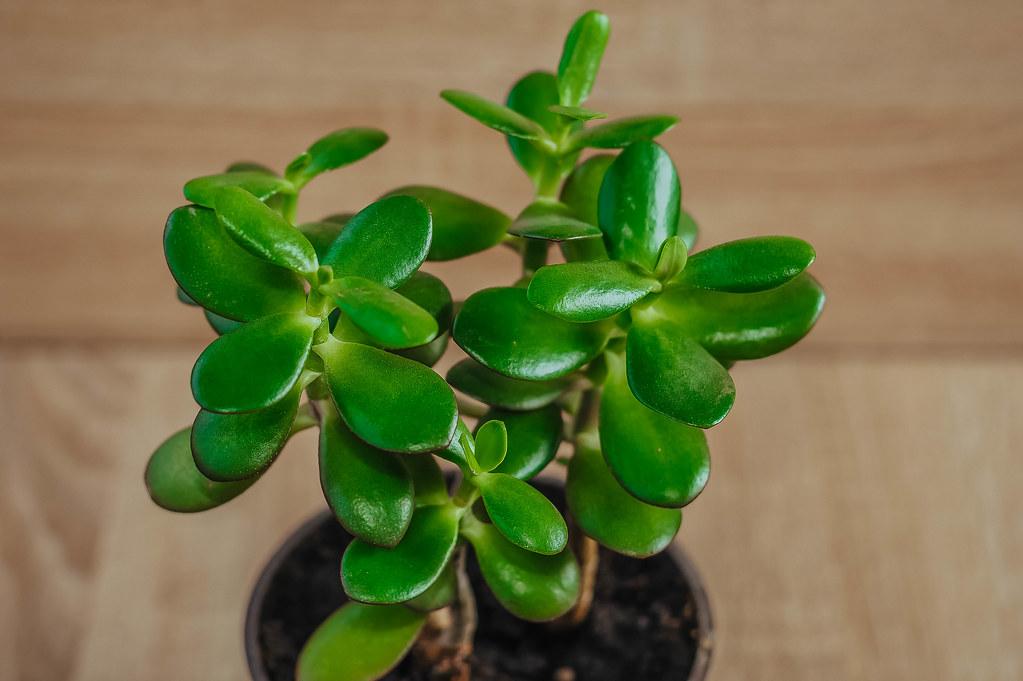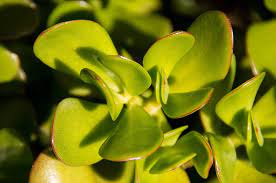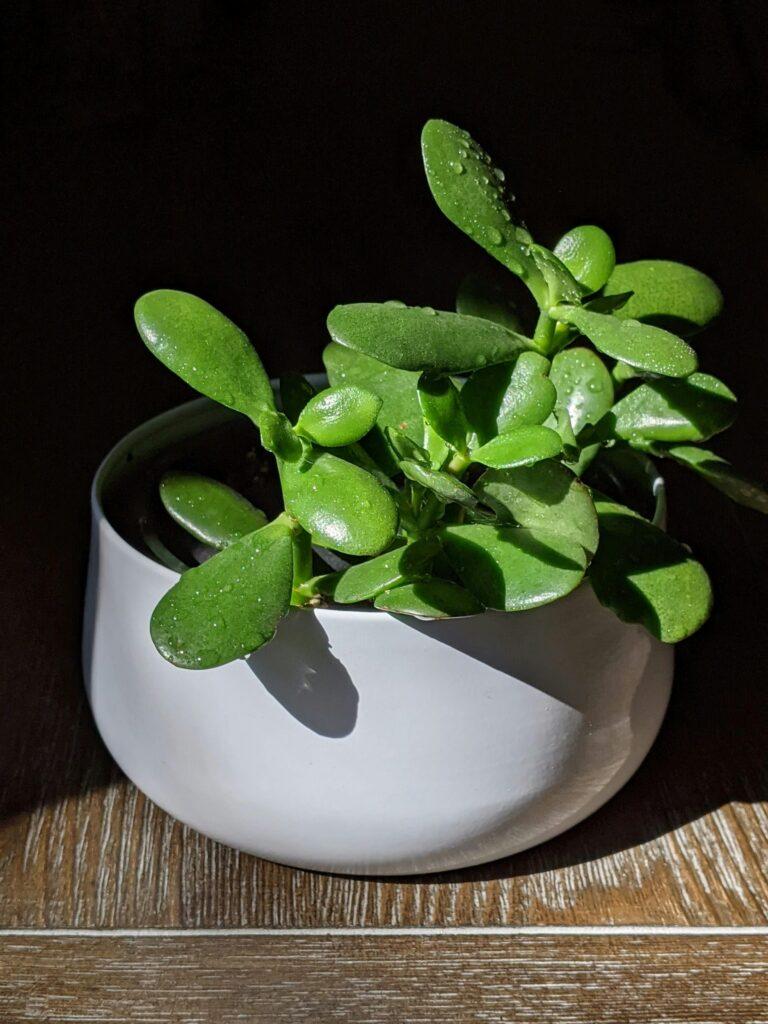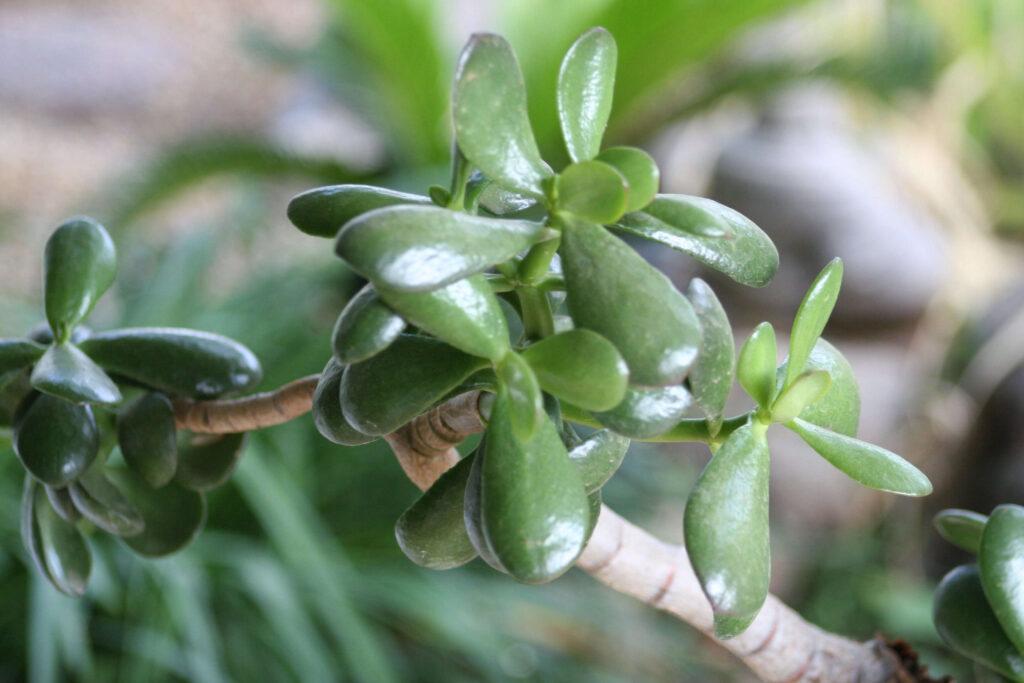
The Jade Plant, scientifically known as Crassula ovata, is a popular succulent that has gained immense popularity among plant enthusiasts and indoor gardeners for its unique appearance and resilience. Native to South Africa, this charming succulent is often referred to as the “Money Plant” or “Friendship Tree” and is believed to bring prosperity and good fortune. Its distinctive, fleshy leaves and easy-to-care-for nature make it an ideal choice for both beginners and experienced plant enthusiasts.
Importance of saving a Jade Plant
Understanding the importance of saving a Jade Plant is crucial for any plant owner. These succulents hold not only aesthetic value but also sentimental significance for many. Over time, a Jade Plant becomes a living representation of the care and attention invested in nurturing it. Saving a distressed Jade Plant is not just about preserving a beautiful piece of nature; it’s also about maintaining a connection with the journey of growth and resilience that the plant symbolizes.
Moreover, Jade Plants can live for several decades if properly cared for, becoming a cherished part of a household. Their longevity makes them witness to various life events, becoming a living record of time. Saving a struggling Jade Plant is a commitment to preserving a living memory and ensuring its continued role in the lives of those who have cared for it.
Common reasons for Jade Plant distress

Before delving into the specific steps to save a Jade Plant, it’s essential to identify the common reasons behind its distress. Recognizing these issues is the first step towards effective intervention.
1. One of the most prevalent issues is overwatering. Jade Plants, being succulents, are adapted to arid conditions and prefer infrequent but thorough watering. Excessive moisture can lead to root rot, causing the plant to wilt and its leaves to become mushy.
2. Jade Plants thrive in well-draining soil. If the soil retains water for extended periods, it can lead to root rot and other issues. Ensuring proper drainage is vital for the plant’s overall health.
3. These succulents prefer bright, indirect sunlight. Insufficient light can lead to leggy growth, stretched stems, and a weakened appearance. Adequate light exposure is essential for their photosynthesis and overall vitality.
4. Common pests like mealybugs, aphids, and spider mites can infest Jade Plants, causing visible damage. Additionally, fungal or bacterial diseases can compromise the plant’s health if not addressed promptly.
5. Jade Plants thrive in temperatures between 65°F to 75°F (18°C to 24°C). Extreme temperatures, especially sudden drops, can stress the plant. Exposure to cold drafts or prolonged exposure to temperatures below 50°F (10°C) can lead to damage, manifested as leaf discoloration, curling, or even dropping.
6. While Jade Plants are adapted to arid conditions, extremely low humidity levels can still affect them, particularly in indoor environments with artificial heating or cooling. Insufficient humidity may lead to dry and crispy leaf edges. To counter this, occasional misting or placing a tray of water near the plant can help maintain a slightly higher humidity level.
7. Jade Plants, though not heavy feeders, still require essential nutrients for proper growth. A lack of key nutrients, such as nitrogen, phosphorus, or potassium, can result in stunted growth, yellowing leaves, and overall poor vitality. Regularly fertilizing the plant during the growing season with a well-balanced, diluted succulent fertilizer can address nutrient deficiencies and promote healthy development.
8. Over time, Jade Plants can outgrow their containers, leading to crowded and pot-bound roots. When the roots become tightly packed, it limits the plant’s ability to absorb water and nutrients. This can manifest as slowed growth, yellowing leaves, or an overall decline in health. Transplanting the Jade Plant into a slightly larger pot with fresh, well-draining soil helps alleviate this issue and encourages continued growth.
9. The type of soil used for Jade Plants is crucial for their well-being. A heavy or compacted soil mix that retains too much moisture can lead to root rot. Conversely, a mix that drains too quickly may not provide adequate water retention
10. Transplanting or changing the growing conditions abruptly can stress the plant, causing leaf drop or temporary wilting. When repotting is necessary, it’s essential to do so with care, minimizing root disturbance and allowing the plant time to acclimate to its new surroundings. Gradual adjustments to light, temperature, or humidity should also be made to prevent stress-related issues.
16 Ways on How to save Jade Plant

Here we have given some ways how to save a jade plant in a pot. So read on and find out!
1. Watering Adjustment
Proper watering is fundamental to the well-being of a Jade Plant. To save a distressed Jade Plant, monitor the soil moisture levels diligently. Only water when the top inch of the soil feels dry to the touch, ensuring that the plant is not sitting in waterlogged conditions. Employ a well-draining succulent or cactus potting mix to prevent water retention and reduce the risk of root rot.
2. Correct Lighting
Jade Plants thrive in bright, indirect sunlight. To rectify distress caused by inadequate light, position the plant in a location that receives abundant but filtered sunlight. Regularly rotate the plant to ensure uniform exposure on all sides, promoting balanced growth. Additionally, shield the plant from direct sunlight, especially during the intense midday hours, to prevent leaf scorching.
3. Suitable Soil Pot
The type of soil is critical for Jade Plants. If the existing soil is compacted or retains excess moisture, it’s advisable to repot the plant. Choose a well-balanced succulent or cactus potting mix to provide the necessary aeration and drainage. The right soil composition is essential for preventing water-related issues and promoting a healthy root system.
4. Pest Management
Pest infestations can significantly contribute to Jade Plant distress. Regularly inspect the plant for common pests such as mealybugs, aphids, or spider mites. If pests are detected, prompt action is crucial. Treat the infestation using organic solutions like insecticidal soap or neem oil, ensuring that the plant is protected from further damage.
5. Pruning for Health
Pruning is a key component of saving a distressed Jade Plant. Remove dead, yellowing, or damaged leaves to encourage new growth. Additionally, prune leggy stems to maintain a compact and bushy appearance. Pruning not only enhances the plant’s aesthetic but also promotes airflow, reducing the risk of fungal issues.
6. Temperature Control
Jade Plants prefer a stable temperature range between 65°F to 75°F (18°C to 24°C). Protect the plant from sudden temperature drops, especially during colder months. Maintaining a consistent temperature prevents stress and helps the plant thrive. Avoid placing the plant in drafty areas, and provide adequate insulation during colder seasons.
7. Humidity Adjustment
While Jade Plants are adapted to arid conditions, low indoor humidity can affect them. Increase humidity around the plant by misting occasionally or placing a tray of water nearby. Balancing humidity levels ensures the plant’s overall well-being, preventing issues like dry and crispy leaf edges.
8. Fertilization
Nutrient deficiencies can contribute to Jade Plant distress. Fertilize the plant during the growing season with a well-balanced, diluted succulent fertilizer. Ensure that the fertilizer provides essential nutrients, promoting healthy growth without risking over-fertilization, which can harm the plant.
9. Repotting with Care
When a Jade Plant outgrows its current container, repotting is necessary. Handle the roots gently to minimize stress during the transplanting process. Transplant the plant into a slightly larger pot with fresh, well-draining soil. Adequate care during repotting supports continued growth and vitality.
10. Monitoring Signs of Improvement
After implementing corrective measures, closely monitor the Jade Plant for signs of improvement. Look for new growth, vibrant leaves, and an overall enhanced appearance. Adjust the care routine based on the plant’s response, ensuring continued health and resilience.
11. Lack of Essential Nutrients
Identify signs of nutrient deficiencies, such as yellowing leaves, and adjust the fertilizer accordingly. Choose a well-balanced fertilizer specifically formulated for succulents, providing the necessary nutrients for optimal health. Regular fertilization during the growing season supports the Jade Plant’s overall vitality
12. Avoid Root Overcrowding
Over time, Jade Plants can develop pot-bound roots. Regularly check the roots for overcrowding. If the roots are tightly packed, repot the plant into a larger container to provide ample space for root expansion. Healthy root development is crucial for nutrient absorption and overall plant well-being.
13. Choose Right Potting
The type of potting mix directly influences the health of a Jade Plant. Select a well-draining potting mix designed for succulents and cacti. Ensure the mix strikes a balance between water retention and drainage, promoting optimal conditions for root health.
14. Environmental Shift
Jade Plants can be sensitive to abrupt environmental changes. Introduce changes in light, temperature, or humidity gradually to allow the plant to acclimate. Whether repotting or adjusting growing conditions, a gradual approach minimizes stress, supporting the plant’s overall resilience.
15. Protection from Environmental Stress
Shield the Jade Plant from environmental stressors. Ensure it is protected from cold drafts, especially during winter. Provide insulation during extreme weather conditions or temperature fluctuations. By safeguarding the plant from environmental stress, you contribute to its long-term health.
16. Regular Maintenance
Establishing a consistent watering and fertilizing schedule is essential for the ongoing health of a Jade Plant. Conduct routine inspections for pests, diseases, and overall plant well-being. A proactive maintenance routine helps identify potential issues early on, allowing for timely intervention and continued plant vitality.
7 Tips for Maintaining Jade Plant

Here are some tips for caring for your jade plants so that you don’t have to look at how to save a jade plant again.
1. To revive a neglected Jade plant, allow at least a week for recovery, noting that leaves may take time to perk up. Resist assuming it’s dead until most leaves show signs of rejuvenation.
2. Once your Jade plant rebounds, aim to prevent future crises. If your regular watering schedule is weekly, maintain it unless there’s a specific reason for adjustment.
3. For mature Jade plants, water until moisture emerges from the pot’s drain hole. Younger plants should be watered when the soil is barely moist.
4. Apply fertilizer weekly in the growing season, opting for water-soluble or time-released formulas as per package instructions. Mix it with water before applying to the soil.
5. Throughout the year, take cuttings to replace aging or unruly plants. Ensure permission from the owner, and include multiple stems with leaf buds in each cutting.
6. Position your Jade plant carefully, especially if it has multiple trunks that can make it top-heavy. Be mindful of its growth direction, avoiding locations with insufficient light or airflow.
7. Protect your Jade plant from extreme temperatures and direct sunlight, especially in warm climates. Avoid drafty spots to ensure optimal conditions for its sensitivity.
FAQs
How do you revive a dying jade plant?
To revive a dying Jade plant, assess the cause of distress first. If it’s due to overwatering, allow the soil to dry out before resuming a controlled watering schedule. For underwatering, gradually increase water frequency. Ensure the plant receives bright, indirect sunlight, and avoid extreme temperatures. Prune dead or yellowing leaves, and consider repotting with well-draining soil if root rot is suspected. Gradually reintroduce fertilizer during the growing season and monitor the plant’s response. Patience is key, as recovery may take several weeks, but with proper care adjustments, a dying Jade plant can bounce back to health.
How do you regenerate a jade plant?
To regenerate a Jade plant, start by taking healthy cuttings with at least two inches of stem and a few leaves. Allow the cut ends to dry for a day or two to prevent rotting. Plant the cuttings in well-draining soil, keeping them slightly moist until roots develop. Place the cuttings in indirect sunlight and maintain a warm environment. Once roots are established, gradually acclimate the new plants to normal care routines. Regular watering, proper light exposure, and well-balanced fertilizer during the growing season will encourage robust growth and rejuvenate the Jade plant.
Do jade plants grow back?
Yes, Jade plants have a remarkable ability to grow back under favorable conditions. If a Jade plant experiences stress, such as overwatering, underwatering, or other environmental issues, it may lose leaves or exhibit signs of decline. However, with proper care adjustments, including controlled watering, adequate sunlight, and well-draining soil, Jade plants can regenerate and produce new growth. Pruning dead or damaged parts encourages healthy development. Taking leaf or stem cuttings and propagating them in soil can also be an effective method for growing new Jade plants. Patience is key, as the regrowth process may take some time, but with attentive care, Jade plants can recover and thrive again.
Conclusion
Because the Jade Plant is like a succulent, it needs more water than some other plants. Make sure you water it enough so that the soil doesn’t get too dry, but be careful not to give it too much water. The plant’s leaves can also provide shade for themselves and nearby smaller plants!
If you follow these simple steps on how to save a Jade Plant and make sure to give it all the care it needs, it will live longer. If you have any questions about taking care of this plant, please get in touch – our team is happy to help!
Related articles :
How to Decorate a Sunroom with Plants
How to Successfully Plant Pothos in Your Aquarium
I’m Zaib Bilwal, and my journey into the world of home styling began in my school days, where I enjoyed rearranging my space. After graduating in 2015, I turned my passion for furniture refurbishing into a business. Today, it’s evolved into an interior design blog filled with inspiration and practical advice. My mission is simple, to make design accessible and enjoyable, offering you the tools and inspiration to create your dream home.